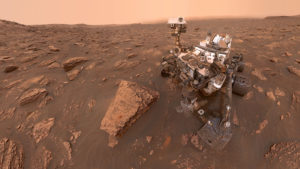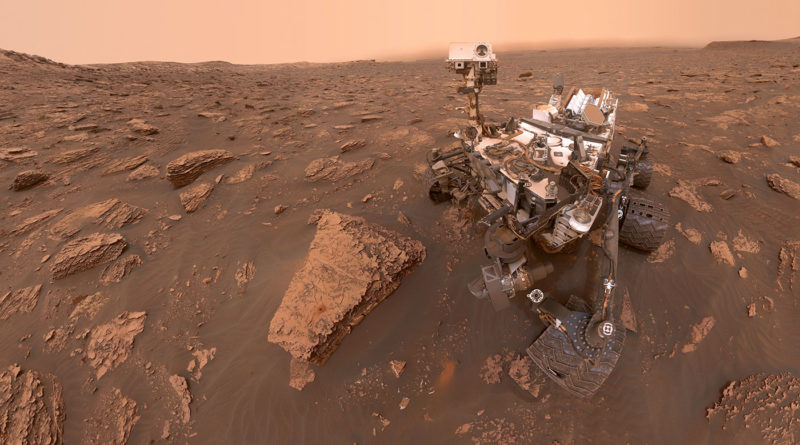NASA Rover Finds Oxygen on Mars
NASA’s Curiosity rover has been sniffing the air above Mars’ Gale Crater, its near equatorial exploration point, for nearly six Earth years (or three Martian years). The rover has ascertained samples of what the surface’s atmosphere is made of and how it changes with the seasons, using its Sample Analysis at Mars (SAM) portable chemistry lab.
Many of Mars’ gases “are very well behaved”, says Melissa Trainer, a planetary scientist at NASA and a team member on the SAM experiment. However, one gas appears to be behaving in an unexpected and altogether bizarre manner: oxygen. Scientist have long known that carbon dioxide freezes over the poles in winter and then sublimates back into a gas in the summer. Curiosity’s measurements have shown tiny amounts of inert argon and nitrogen periodically rising and falling as expected, due to the seasonal cycle of carbon dioxide.

Photo Provided by jpl.nasa.gov
Curiosity also registered atmospheric oxygen rising and falling at similar times, but in amounts that defy logical explanation. During spring and summer there was far more and less in the winter than the seasonal whooshing back and forth that other gases would predict. This suggests that something is creating or unleashing stores of oxygen in the warmer months and trapping or swallowing it up during the frigid months. This could be geological, chemical, atmospheric, or perhaps even a biological process, but right now scientists are not sure what the culprit is.
Oxygen’s too-high spikes and too-low nadirs during the warmer and colder months, respectively, came as a shock to scientists. Curiosity’s scientists could conceive only two possibilities: either a mysterious creator and destroyer of oxygen existed on Mars that scientists were unaware of, or the measurements from SAM were wrong. Trainer, the lead author of the study reporting the discovery in the Journal of Geophysical Research: Planets, emphasizes that this detection and analysis took many years, with all possible false positive triggers being ruled out.
Paul Niles, planetary geologist and analytical geochemist at NASA says, “I think they’ve done their due diligence.” Plenty can go wrong with interplanetary science experiments, from equipment malfunctions to contaminations. Regardless, he says, “I don’t see any reason to have any doubt in the oxygen measurements.” Francois Forget, a planetary scientist at the French National Center for Scientific Research, says, “I hope it’s real,” because an extraterrestrial oxygen enigma is far more fun than a glitch.
“A true enigma would force researchers back to basics,” says Manish Patel, a planetary scientist at the Open University. “We must first interrogate our understanding of the unknown processes for creating oxygen, before we invoke any new, or controversial, processes.” Trainer and her colleagues are doing just that.

